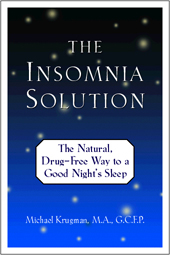Question:
Is the changing pattern of breathing a real biological phenomenon,
or is it something related to our stressed western way of life?.
Michael’s response:
The ever-changing rhythm and pattern of the
breath is a fundamental biological mechanism that
applies to all human beings and all breathing
animals in every time and place. The conditions
of our lives may be more stressful, or less so,
but the same principles apply no matter what.
All living organisms experience stress and
produce an observable physiological response to
it. In fact, we could define life itself
as an alternating cycle of stress and the cessation of stress.Here’s what I mean:
The broadest definition of stress “the response
of an organism to any demand placed upon it.”
(Hans Selye) Looking at it that way, we
understand that just being alive is stressful. In
order to live, we must breathe, and that places a
demand upon the organism: in order to breathe, we
must activate the muscles of respiration, and
move our body in order to draw the breath in.
That demand for breath, and our response to it,
produces a stress response. And like all stress
responses, that brings heightened activation of
our mental and physical faculties. Blood pressure
rises, heart speeds up, muscle tone is increased,
cerebral processing speeds up–in other words, an
excitatory effect, with enhanced arousal.
Once we have inhaled, the immediate demand for
breath subsides. As a result, we breath out, and
for a few moments we completely cease the effort
of breathing. (In Assignment 4 you will learn
that during quiet breathing, the exhalation
proceeds passively, by means of the elastic
recoil of the lungs, rib cage, and diaphragm.)
When we breathe out, the stress response
subsides, and that has an inhibitory effect on
the organism. Blood pressure is reduced, heart
slows down, muscle tone decreases, and cerebral
processing slows down. That is the primary
pulsation of the breath, without which life is
impossible.
***Important point: The breath has an active,
excitatory phase, and a passive, inhibitory
phase. Inhalation is the excitatory phase of the
breath, and exhalation is the inhibitory phase of
the breath. All, take note.
***Something to memorize verbatim: “Stress is the
response of an organism to any demand placed upon
it.”–Dr. Hans Selye, pioneer of stress research,
in his book, The Stress of Life.Question:
Do you know if monks in meditation,
breath in more harmonious ways concerning this pattern?
Is in their case this oscillation in the breathing pattern is softer
than for western people?
Michael’s response:
Long-term meditation practice combined with
monastic life can change your breathing rhythm,
as you will see in the reading for Assignment
Three. But even monks experience stress, and
their breath changes in response to it.
An acquaintance of mine is a Buddhist nun living
in a monastery in Burma. She says life there is
often very noisy, smelly, busy, and stressful.
She works hard, eats little, and sleeps less.
Some mornings she wakes up, opens her eyes, and
thinks, “Oh no, am I still in Burma?” And of
course one always has to deal with the vagaries
of living under a military dictatorship in one of
the poorest countries in the world. It’s
stressful!
Question:
Do you know whether their meditation practice
leads them to develop longer inspiratory pauses?.
Michael’s response:
Probably, yes. It definitely does make
exhalations longer relative to inhalations,
according to the studies cited by Austin in
“Breathing in, breathing out” from Zen & The
Brain
REFERENCES:
1/ The Stress of Life. Hans Selye, M.D. New York, McGraw-Hill Book Company, Inc. 1956
.

__,_._,___



 Since 2007 a practitioner of the Feldenkrais® Method of Somatic Education, I also teach Michael Krugman’s Sounder Sleep System™ which is a development of Feldenkrais at its very core.
Since 2007 a practitioner of the Feldenkrais® Method of Somatic Education, I also teach Michael Krugman’s Sounder Sleep System™ which is a development of Feldenkrais at its very core.


July -August A Sounder World with Sounder Sleep System™ Tuesday Weekly & 15-hour workshop Aug 26-28, 2022 https://thinkinginmovement.ca/sleep-15-hour-workshop/
A Sounder World with Sounder Sleep System™ 15-hour workshop Dec 10-12, 2022: Weekly Practice Mondays https://thinkinginmovement.ca/wp-content/uploads/2022/10/A-Sounder-World-with-Sounder-Sleep-System%E2%84%A2-15-hour-workshop-Dec-10-12-2022-Weekly-Practice-Mondays.pdf?swcfpc=1
Notes about the Oura Ring: https://ouraring.com/
‘All it has to go on is blood flow… (plus movement, temperature, and possibly some variations on light frequencies indicating oxygen levels). ‘
Some people wear it at night, and it pretends to chart your brain waves showing levels of sleep (it pretends to, but it’s just guessing.). Click to view or download the Brain waves diagram https://thinkinginmovement.ca/wp-content/uploads/2020/09/S1A4-Brain-waves.pdf
‘My soul is restless until it rests in you’ St Augustin https://en.wikipedia.org/wiki/Augustine_of_Hippo